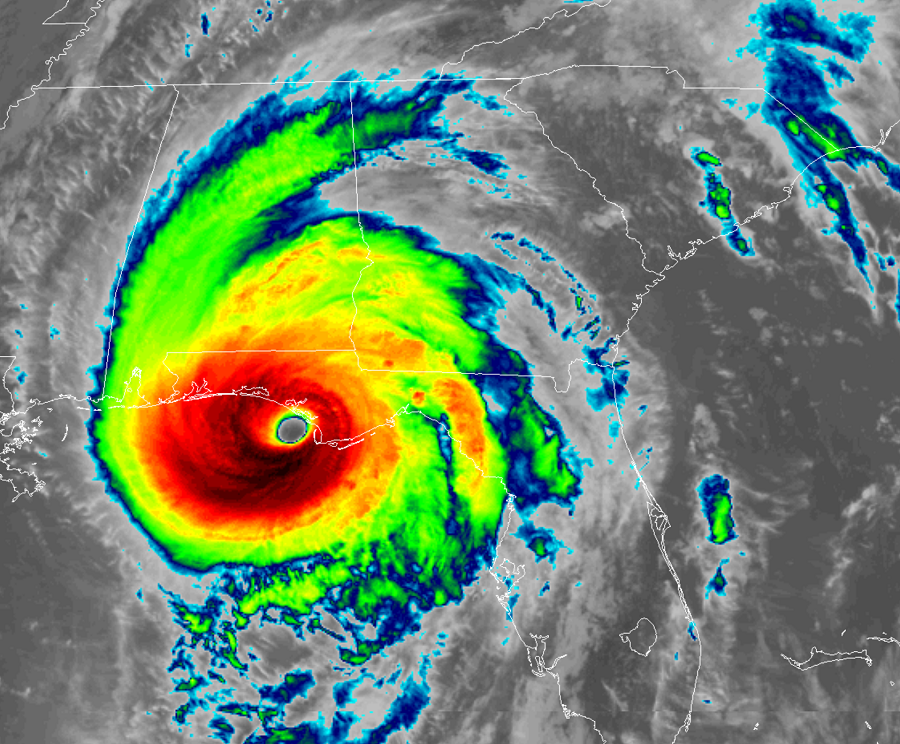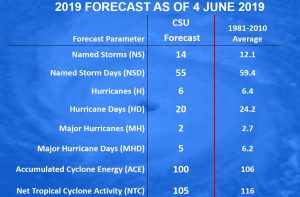
Colorado State University (CSU) hurricane experts have increased their hurricane forecast for the 2019 Atlantic Hurricane season which began on June 1. The Tropical Meteorology Project
“We have increased our forecast slightly and now believe that 2019 will have approximately average activity,” said this morning by the CSU Tropical Meteorology Project team in a seasonal outlook update. “There remains considerable uncertainty as to whether El Niño conditions will persist through the Atlantic hurricane season. The tropical Atlantic has warmed slightly faster than normal over the past few weeks and now has near average sea surface temperatures. We anticipate a near-average probability for major hurricanes making landfall along the United States coastline and in the Caribbean.”

While the outlook doesn’t forecast a specific area that’ll be struck or that’ll say safe this season, they do caution that the entire coastline should be prepared for the possibility. “As is the case with all hurricane seasons, coastal residents are reminded that it only takes one hurricane making landfall to make it an active season for them. They should prepare the same for every season, regardless of how much activity is predicted.”
The updated outlook calls for 14 named storms which is slightly higher than the usual 12.1 that’s formed in the hurricane basin on average between 1981 and 2010. Of those, 6 are expected to become hurricanes, 2 of which are forecast to become major hurricanes. On average, there are 6.4 hurricanes and 2.7 major hurricanes each year.
The effort at CSU is led by Research Scientist Dr. Phil Klotzbach. He received his Ph.D. in Atmospheric Science from CSU in 2007. Klotzbach has been employed in the Department of Atmospheric Science for the past eighteen years and was co-author on the Atlantic basin hurricane forecasts with Dr. William Gray through 2005. He became first author on the seasonal hurricane forecasts in 2006. Klotzbach developed the two-week forecasts currently being issued during the peak months of the hurricane season between August-October. He has published over two dozen articles in peer-reviewed journals such as Journal of Climate and Weather and Forecasting.
The full report can be viewed here: https://tropical.colostate.edu/media/sites/111/2019/06/2019-06.pdf
The work done by CSU is sponsored in part by Weatherboy, Interstate Restoration, Ironshore Insurance, and the Insurance Information Institute.